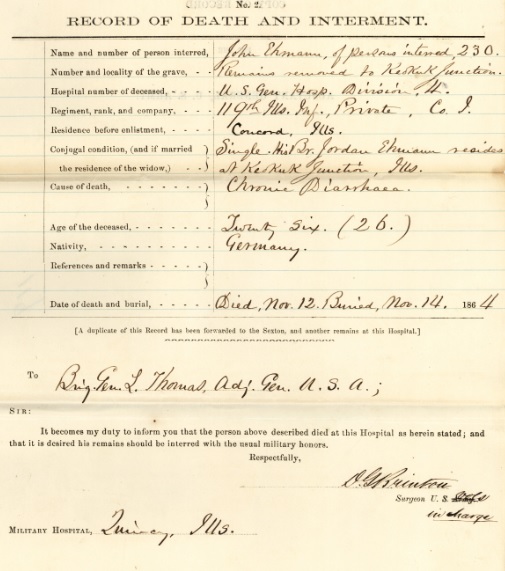A contemporary record can be worth countless others that are not.
John Ehmen’s application for a military headstone indicated that he died in Galesburg, Illinois. The application for a headstone is not the only item that indicates John died in Galesburg. There are several family histories and numerous online trees that contain that place of death.
The likely reason for the belief that he died in Galesburg is that one of his parents probably lived there for a time. Knowing the probable reason for an incorrect fact is helpful but it does not change the fact that the “fact” is incorrect.
John’s compiled military service record based on his being a member of the 119th Illinois Volunteer Infantry provides a different place of death: Quincy, Illinois’ military hospital. It provides the same date of death as the tombstone application: 12 November 1864
The “Record of Death and Interment” provides a burial date of 14 November. It’s not quite clear from the document if that date of interment was in the hospital cemetery or the cemetery near Keokuk Junction where Ehmen’s stone was placed. The “Record of Death and Interment” provides a “number of persons interred” of 230 for Ehmen. This may indicate that he was originally buried on the hospital grounds. Keokuk Junction, Illinois (now Golden) is not far from Quincy. Most men who died in the hospital were probably not as local as Ehmen was and probably were not returned home for burial.
At any rate the mystery around where Ehmen died appears to be solved. A contemporary record of his death that provides a location–actually fairly specific as the hospital is named–trumps later records created significantly after Ehmen died.
Original sources with primary information (when one can obtain them) are best.


No responses yet